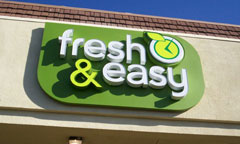 Analysis of Fresh & Easy – Tesco’s loss making foray into the US grocery market – is a great place for local shopkeepers to go in terms of understanding what Tesco believes makes local shops tick.
Analysis of Fresh & Easy – Tesco’s loss making foray into the US grocery market – is a great place for local shopkeepers to go in terms of understanding what Tesco believes makes local shops tick.
Interviewed this summer, Tim Mason, chief executive of Fresh & Easy, said shoppers were telling him that “you’re certainly easy but you don’t seem to be that fresh.”
“
you’re certainly easy but you don’t seem to be that fresh.”
His response is to re-jig how the stock is displayed. Flowers are moving to the entrance. The freed space will be filled with in-store bakery products. Fresh coffee to take away will be added. In areas of strength, such as fruit and vegetables, more needs to be made of the products in store. Health and beauty will get less space and own-label food more.
What to learn? First, that despite all its know-how and the research it put into the launch of Fresh & Easy, Tesco made lots of mistakes. In an attempt to keep costs down, it failed to sell its Fresh message. As many independent retailers know, getting fresh correct is vital to success as a convenience retailer. But getting fresh correct is also hard work. You have to experiment.
Would you buy a meal from this shop?
More importantly, I think the Fresh and Easy story underlines how important it is to get your brand correct in the mind of shoppers. When you visit other independent local shops, ask yourself, “if I you had guests coming tonight who I wanted to impress, would I buy my evening meal from here?”
Once you have established the trust in the mind of shoppers, then your brand has the potential for momentum.
But remember that fresh and easy may not be the correct brand message for your shoppers. You may be serving a population that puts more emphasis on cheap than on fresh. Or a population that puts more emphasis on fast than on easy.
Finally, what is striking about the product groups that Tesco is struggling with in America is that none of them are new to the UK convenience channel. What may be key to your success is in getting the adjacencies correct – presenting products in a way that encourages shoppers to spend more. As they buy a four-pack of beer and see some crisps they will remember that they like a snack with a drink!



Comments
This article doesn't have any comments yet, be the first!